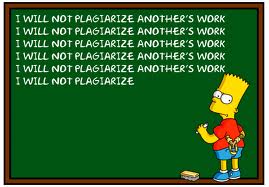

Class Exercise 1: Write a purpose statement for your Report Assignment
Portfolio Exercise 1: Compare different report styles and conventions
Portfolio
Exercise 2: Organising information: the State Govt Dog Act
Writing Style Exercises 1: Eliminating Wordiness
![]()

Our face-to-face lectures have now finished. You can still listen to an online lecture each week via the weekly webpage but it's up to you to make the time.
Because much of the remaining material of the unit is about professional writing, our classes will now be held in computer labs rather than tutorial rooms.
Week 9: Report Writing (part 1)
Over the next two weeks
we are going to be looking at the steps and strategies for writing a
business report. This is a widely used genre of professional or workplace
writing

So, what is a business report? Here's the definition that was used in the lecture.
Reports are documents written on a given subject to convey ideas and information and sometimes to make recommendations.
Reports are written to provide comprehensive information, analysis and expert opinion.
Reports provide a permanent written record of research, information and ideas.
Reports are used for a wide variety of purposes including to:
Request/justify a proposal
Describe a work-in-progress
Record events
 .
.
For a detailed overview, read Chapter 12 of your textbook (pp. 328-343).
In these pages there will be several 'sample' reports designed to give you a better sense of how a report should look and how it might be written.
While you can apply the structure (layout) and approach (how they went about writing about their problem), DO NOT merely copy the text and change a few words. This is plagiarism and you will be penalised. Please use your own words and cite your quotations or sources. If you are unsure of how to do this, consult your tutor BEFORE you submit your Draft Report. |
Before you begin to write or research your report …
Now that you have chosen your scenario and the organisation for whom you will be writing your report, you need to do the following:
1) Frame your question specifically. For example, a topic such as "Electronic Communication in today's society" is too broad. Make it more focused – eg "The impact of using email on the productivity of workers in XYZ organisation" is better. It specifies what kind of electronic communication the report will cover (email as opposed to SMS or chat which is not relevant to business), what aspect of the topic you will be investigating (eg productivitiy issues with the use of email), and what context you will be investigating within (eg the impact within organisations as opposed to the impact for people using email socially).
2) Have a specific audience in mind. For instance, if we use the example above, our audience might hypothetically be the CEO or the board of directors of any specific organisation, such as Coles Myer, PBL, Telstra etc. You need to write as if you were investigating your issue on their behalf.
3) Define the purpose of your report. To continue our example, the purpose of the report mentioned above might be "to research and examine how email is used within XYZ organisation, the advantages and disadvantages of the use of email in XYZ organisation, specifically focusing on how productivity may be affected." See the suggestions below on how to do this and why it is important and useful.
Remember that this is NOT as essay and needs to be written using business language. Check out these links which cover both report layout and structure as well as aspects of report writing language and style. We'll also look at aspects of this over the next few weeks.
Birmingham City University – Writing Business Reports
Charles Sturt University – HSC online
University of Wollongong Unilearning site – follow the various links as they relate to issues of style, sentences etc. A good site.
There are different types of reports which use different layout and writing conventions depending on the audience and purpose. A report can be presented as a:
a. Memo report – a form of short report intended for an audience within your organization. Memo reports do not have title pages, summaries or tables of contents. They provide identifying information at the beginning (TO, FROM, DATE, SUBJECT). Check out this example
b. Standardized form report – these types of reports often use a pre-printed pro forma with sections to be completed. Accident or incident reports, sales reports are examples of this type. Have a look at this example.
c. Formal long report – as the name suggests, this form of report is a longer, detailed document which uses many layout elements to allow the reader to find their way through the information. Long reports are usually written to address more complex issues or for audiences outside the organisation. Here's an abridged example.
Your report should use the Long Report format but please don't feel you have to copy it exactly or use the same headings. Create headings that make sense in relation to the topic you have chosen and the purpose and audience of your report.
Business Reports are essentially organised collections of facts commissioned by an organisation for a specific purpose usually to analyse an issue or problem and help decision making.
Many people think of business reports as dry, boring documents that take a great deal of time and effort to prepare. However they are a very commonly and widely used form of professional writing with which you will be expected to be familiar once you enter the professional world.
Some people wonder if reports are worth all the effort. So ... before we start talking about how to write a business report, let's talk about why.
What is the purpose of business reports? Simply stated, a business report conveys information to assist in decision-making. The report is the means to present this information. Some reports might present the actual solution to solve a business problem; other reports might record historical information that will be useful to assist in future decision making. Either way, information is being "reported" that will useful in making decisions.
In order for the writer to have a clear understanding of why they are writing their report, it is essential to firstly write down the purpose of the report in a few words. This could be written as either a statement or a question. For example:
Class exercise 1: Write a 'purpose statement' for your report![]()
Using the scenario that you described in your Project Overview, write a brief purpose statement for your report. Use the examples above to guide you. You can phrase it as either a statement or a question (as above). Start with a simple sentence such as :"The purpose of this report is to … ". Your tutor will discuss your answer with you. Keep this to use in your assignment.
Steps in Writing a Routine Business Report
Your assignment will be to write a long report to help solve a business-related problem. The problem should be related to one of the scenarios we have suggested – a new technology or a website redesign.
Once you have chosen your topic, you're then ready to start thinking in terms of a report. Don't decide on a solution right now. I want you to go through some steps to come to the RIGHT solution.
In creating your report, follow these six steps. We will look at some of these in more detail in following weeks.
Your assignment should be set out, and use the features of, a 'long report'. You can see examples and an explanation of each part of the report in this week's lecture slides. However, in summary, a long report should contain the following parts:
• title
page
• table of contents
• executive summary
• page numbering
• headings, subheadings and a decimal numbering system
• text citation of quotations and paraphrases eg Smith (2004)
• bibliography using APA style (see link on vUWS homepage)
• properly referenced and annotated graphs, pictures and/or diagrams
What
should my report look like and how should it be written?![]()
Here is an example of a report written by a former student. It is not perfect but it will give you a guide as to what is generally expected.
In addition, here is another sample report prepared by a TAFE teacher who is a friend of ours. It shows examples (made up) of the layout, style of language and relevant parts of a report proposing and analysing the introduction of
Portfolio exercise 1: Compare different reports styles and conventions
Here are some real life examples that show good (and bad) conventions especially tables/graphs. Choose two from the selection (or find your own), and compare the extent to which they comply with the conventions we have been discussing. Give specific examples from the text to illustrate your points. Don't forget to give a reference to any that you find yourself. Consider the following points:Choose from these examples or find two of your own online
Portfolio Exercise 2: Organising information: Extract from the State Government Dog Act
In
this exercise, the ideas have been presented in random order. In a small group,copy the points into a Word document and
reorganize the information in logical order. Use the following steps:
a) Note: Greyhounds in a public place must also be muzzled.
b) The owner of a dog which defecates in public shall immediately remove the faeces, or shall be guilty of an offense.
c) A person who is the owner of a dog of six months or over shall apply to the local council for the registration of such animal.
d) Any person who rescues a dog lawfully detained by and after seizure, shall be guilty of an offense.
e) The registration period extends from 1st October to 30th September each year.
f) A registered owner of a dog must be over 18 years old.
g) A dog is prohibited from entering children’s playgrounds, school grounds, shopping arcades and complexes, and any area used for the preparation of food.
h) Council must be notified of any change in the ownership of a dog.
i) A dog in a public place shall be under the effective control of some competent person.
j) Council must be notified of any change of address of a dog owner.
k) Any dog which is not under the control of a competent person and is not on the land or within the premises of the owner, can be seized and taken into Council’s detention kennels.

You may be wondering why in a course on computing, you need to know about professional writing? Many of you have probably deliberately avoided writing at school and now in your first semester of university are confronted with the need to study this aspect of communication.
Professional writing is the kind of writing that is done in business and the professions. That means just about all professionals, since all professional people write on a regular basis. Lawyers, doctors, engineers, and programmers need to write, basically all the time. I regard myself as a professional writer even though I am not called this job title.
For the purposes of this course, we will be working through some of the main principles to help you make your writing clearer, more concise and easier to read.
As outlined in the introduction, we can edit our writing using a set of principles listed below. As you become more confident, this will become easier but at first it may be quite hard. Here's a simple list to use as a starting point. None of these principles work purely on their own. They often cross over and complement each other.
Let's look at the first few commandments.
1. Avoid complex, longwinded expressions, fad words, jargon and cliches.
Wordy and long-winded expressions can make it hard for your readers to understand your writing quickly and easily. Unfortunately, some people tend to use language to impress rather than to communicate and so use vocabulary that is inflated or more formal than is necessary. For example, they may write 'furnish' for 'give' (I will furnish the information), or 'intimate' for 'inform' (Please intimate your departure)
Here are some common examples:
POOR: In this letter we have attempted to answer all of your questions, and we hope that if you have any additional questions whatsoever, please do not hesitate to contact us.
IMPROVED: If you have additional questions, please call us.
POOR: Pursuant to our discussion, herewith we acknowledge receipt of your correspondence as of the above date.
IMPROVED: We received your letter on December 16th, as we discussed.
POOR: Enclosed please find the information per your request. Hopefully you can utilise our product to benefit your company within the parameters of your computer’s invoice programming.
IMPROVED: We
have enclosed the information you requested. Our product will speed
your computer’s invoice processing. We appreciate your business.
Writing style exercises 1: Eliminating wordiness
Download this document and start these in class today. Complete them to include in your portfolio. You must attempt all of the exercises in this document. Your portfolio must include at least four sets of these. They will appear in the weekly webpage from now on.
Some suggested answers: there are answers to some of the exercises here, but not all. Don't cheat … you won't learn by doing that.

For more detail on these style principles, we've created a series of flash tutorials to help you. You can find these under the tab at the top of the page.
Here's the first one on 'Eliminating wordiness'.
Our textbook has been newly revised especially for this unit. Most lectures and many class activities will be based on the book, so we recommend that all students have access to a copy and bring it to class every week. Copies will be made available in the Library Closed Reserve.
In addition, class discussions and presentations will be based on more specific readings on the weekly topic. These can be found under the 'Tutorial Readings' tab at the top of this page.